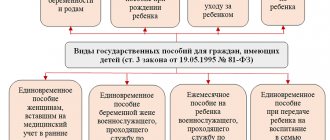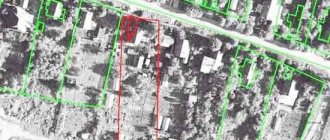To confirm his rights to a specific land plot, a citizen must have a certificate of ownership in his name.
The document contains information about the plot and its owner.
What is a certificate, why is it needed, how to get it, can it be issued in paper form?
What to do if the original is lost, is a duplicate issued? We will discuss it in detail in the article.
What are they for?
In the event that there is a need to transfer the land to another person (for example, for construction), or to carry out legal actions with it, the person must necessarily confirm the fact of legal ownership of the land plot.
Title documents will be required in the following situations:
- Drawing up a deed of gift.
- Entry into inheritance in connection with a will.
- Entry into inheritance in connection with the current priority according to the law.
- Protection of personal interests relating to property.
- Registration of purchase or sale.
- Registration of a mortgage on land.
- Drawing up a lease agreement.
IMPORTANT !!! As the law says, namely Article 130 of the Civil Code of the Russian Federation, land is real estate, and it follows that its owner must obtain the appropriate documents for it, which will confirm the fact of his legal possession or use.
Procedure and procedure for registering ownership of a land plot (land): step-by-step instructions
During Soviet rule, the entire territory was considered state territory. To avoid desolation, it was transferred to lifetime inheritable ownership or perpetual use. An order, resolution of a municipal body or an extract from the business book are the main supporting documents. Those who have them are allowed to register in a simplified format - under a special amnesty. It applies to those plots that were allocated up to October 2001 inclusive.
If you have the necessary documentation, even if it was registered many years ago, the state agrees that you are the real owner and allows you to go through the registration procedure in an expedited manner. However, it is not always possible to resolve land disputes quickly. In some cases, people face a series of years-long legal battles.
Step 1: registration of land ownership
In a successful scenario, the algorithm for obtaining real estate is as follows:
- You come to Rosreestr (it is advisable to choose branches related to your area).
- Fill out the application, which is issued by an employee on site.
- Submit a package of documents (the list is presented above).
- You pay the state fee.
After completing the above steps, all that remains is to wait until your request is processed and come for an extract on the specified day.
Step 2: registration through the MFC
Do not think that Rosreestr is the only way to resolve the issue. You can also contact the Multifunctional Center, but first you will have to supplement the existing package of documentation with declarations for buildings that are located on the land plot.
What to do next:
- Pay the state fee at the cashier.
- Fill out the application issued by an employee of the organization.
- Receive a certificate receipt.
Wait until the confirmation certificate is ready and come for it on the appointed day.
What documents are included in the list
If a legal transaction is planned, both the house and the land are planned to be transferred for use to another person, then to carry it out you will need to provide more than one document. Title papers are a set of official statements and certificates, without which it is impossible to carry out registration actions regarding land.
The list of 2021 title papers includes the following documents:
- Certificate confirming that the registration of rights to the land plot has been carried out. You can receive it only after all rights have been registered in Rosreestr.
ATTENTION !!! The certificate includes a detailed description of all technical characteristics of the land. It also indicates who owns what share of the land;
- A document that can confirm that the transfer of property rights to the current owner was carried out in accordance with all legal requirements. Such paper can be of different types, depending on what circumstances contributed to the transfer of rights. For example, in some situations, such a document may be a purchase and sale agreement or a deed of gift agreement;
- A cadastral plan, which describes in detail all the technical details of the real estate - what is its area, where it is located, what it is intended for. Also in the cadastral plan there must be a graph indicating the boundaries of the land plot. The cadastral number is another important part of the cadastral plan. These numbers indicate a unique number, which, when decrypted, can tell about the real estate data;
- An extract from the state register, which can confirm the fact that the land was legally registered as of federal importance.
All of the above documents are very important and their presence is mandatory.
Current title document
The main paper that determines the ownership of any real estate is an extract from the Unified State Register of Real Estate (USRN). Now this document has also replaced the extract from the cadastral passport, as it contains a diagram of the location of the object and its main characteristics.
Just a few years ago, the main document of title was considered to be a certificate of ownership. Many citizens still believe that when registering a land transaction, they should be given this exact document. Although such documents are no longer issued, they continue to be valid upon presentation.
Where can I get all the necessary papers?
Depending on the circumstances under which the property was acquired, the necessary documents may be issued by various authorities. Where can I get it?
The competent authorities in this case are:
- Rosreestr. It is in this body that the registration of rights to property takes place. When contacting the authority, you must have the originals of all land documents with you.
- Notary person. You can also obtain the necessary title documents from the notary who executed the transaction, as a result of which the applicant became the owner of the property.
- Representatives of the partnership. You can contact the management of the partnership if the applicant is a member.
What to do if there is ownerless land?
In this case, the legislation provides for two scenarios for the development of events. The first and most convenient is to find the owners or their heirs and offer to buy the property. To speed up your search, you can contact your local office and ask for assistance. If the search work does not produce results, resolving the issue can last up to two years, or even more.
To register the right to own an abandoned territory, follow these recommendations:
- Send your request to the nearest governing body. Attach copies of requests to the local administration to your application - this way you will confirm that searches have already been carried out previously. Based on your request, the committee will register the land in the cadastral register. After this, the owners or heirs will have a year to challenge the decision. After the specified period, the case will automatically go to court.
- If during the proceedings it can be proven that the site is empty, it will go to the municipality.
- Your task is to rent it on time. And then start preparing documents: a master plan in the BTI, geodetic markings, etc.
- Hand over the package of collected papers to the local administration.
The application is considered from one to three months. If the decision is in your favor, you can buy the plot at the average market price. All that remains is to carry out land surveying and register with Rosreestr.
Receive necessary documents remotely
Not only its owner, but also another person who plans to purchase it in the future may want to receive information about real estate. If such a situation arises, the future buyer of the property should find out its cadastral number. If he knows it, then he can get acquainted with the technical data for the object remotely.
To do this you should go through the following procedure:
- Go to the official website of the USRN.
- Go to the object data search menu.
- Enter the cadastral number in the appropriate line.
- Select the desired object from the list provided.
- Place an order to receive an extract.
- Pay the state fee.
- Read the written response in your personal account on the USRN website.
As a rule, after placing an order to receive an extract, a response will come within 5 days.
ATTENTION !!! If during the search for the required object by cadastral number there were no results, this indicates that the property did not go through the privatization procedure. And if for some reason it was not possible to find out the cadastral number of the property, this means that the property is leased by an individual.
After the electronic statement arrives in your personal account on the Unified State Register of Real Estate, you can view general information about the property.
It provides the following information:
- Where is;
- Square;
- What is it intended for?
- Has privatization been carried out?
- What ownership is it in?
- On what basis was the transfer of rights to the current owner carried out;
- Are there any financial obligations;
- Are there any other encumbrances on the property?
There is another remote way to find out general information about the property you are interested in. This is a public cadastral map. But you can only find out information if you know the location of the object. If so, then the interested person can find the object on the map and make sure that the property that interests him has undergone the privatization procedure.
What does it include?
The document must be drawn up on a unified form and include a standard list of data.
These include:
information about the owner of the site;- land information;
- grounds for the emergence of rights;
- information about the body that carried out the registration;
- date of issue;
- cadastral number;
- purpose of the territory;
- existing encumbrances, etc.
There are no attachments to the certificate.
Legal force and requirements
As for the right to own a land plot, it can be established by a decision:
- administrative;
- judicial
To conclude a transaction under a land plot, it is necessary that the title documentation has legal force. It is acquired by passing state registration, a mandatory requirement established by clause 1 of Art. 131 Civil Code of the Russian Federation. The state registration of real estate is regulated by Federal Law No. 218, adopted in 2015 and which came into force in 2017.
Restrictions and prohibitions on registration of land ownership
An important point that should not be missed when intending to register land ownership relates to the very possibility of doing so. In Art. 27 of the RF Land Code contains instructions regarding:
- withdrawal of certain lands from circulation;
- restrictions on the circulation of memory.
Clause 4 contains land plots that cannot be transferred from federal property, since they are occupied by objects important for state security.
Clause 5 contains a list of state and municipal land plots, the transfer of which into circulation is limited for certain reasons.
Using a site included in the list of clause 4 of Art. 27 of the Land Code, it must be taken into account that it will not be allowed to be registered as property. It will also be prohibited to privatize certain storage units, referring to clause 8.
According to clause 5, transfer of ownership is sometimes possible, but specific circumstances must be taken into account.
Need
When transferring land between owners, as well as if you want to carry out legal measures with a personal land plot, a person must confirm that he has the legal rights to manage the land. This also applies to the desire to carry out private residential construction.
Providing a list of title documents will be mandatory in the following circumstances:
- execution of a gift agreement;
- inheritance based on a will or in accordance with legal priority;
- protection of property interests in court;
- purchase and sale of land;
- transfer of land as collateral;
- registration of land lease.
Article 130 of the Civil Code of Russia determines that land is real estate, therefore the owner of the plot must obtain documents confirming the legality of ownership and use of a specific plot.









